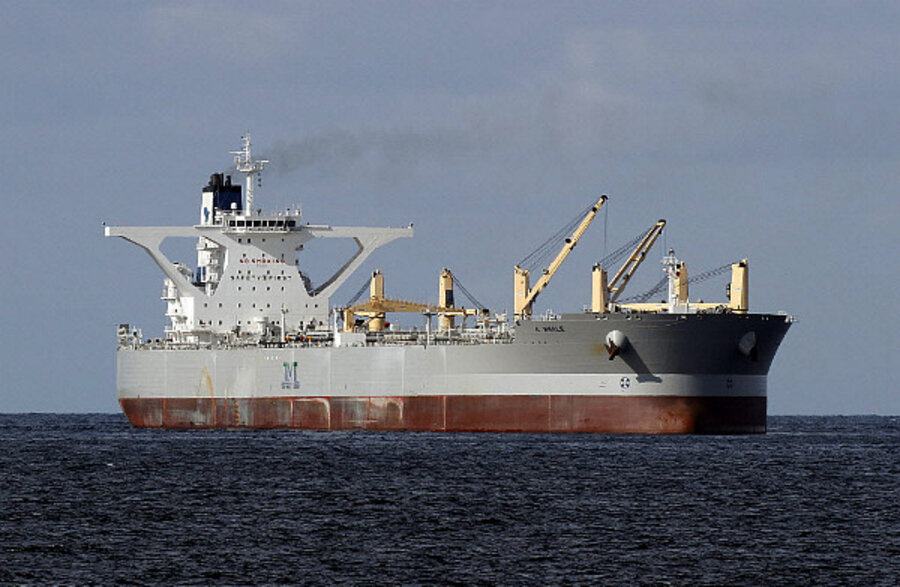'Whale' superskimmer drops out of Gulf oil spill response
Loading...
| Atlanta
The Coast Guard said “thanks, but no thanks” to the superskimmer “A Whale” Friday, as the 1,100 foot-long converted iron ore freighter failed to make a sizeable dent in the Gulf oil spill during a 24-hour testing period.
Brought to the Gulf by Taiwanese shipping magnate Nobu Su to help sop up the vast blanket of oil covering parts of the Gulf, the massive A Whale held a tantalizing promise for Americans frustrated by the slow pace of the spill clean-up. Under ideal conditions, the ship's owners said, the A Whale could gather more oil in a day than all the other skimmers on the Gulf combined.
In reality, the A Whale gathered a "negligible" amount of oil over a 24-hour period while nearly 600 smaller skimmers sucked up 25,551 barrels of oily water and recovered 12,800 barrels near the source of the spill.
IN PICTURES: The Gulf oil spill's impact on nature
"While its stature is impressive, 'A Whale' is not ideally suited to the needs of this response," Coast Guard Admiral Paul Zukunft told the Wall Street Journal.
The A Whale's failed cruise reaffirmed the Coast Guard strategy of using a fleet of smaller vessels to corral the vast spill.
But the failure of the ship to collect a lot of oil, however, also raised new questions about BP's controversial use of kerosene dispersants at the source of the spill. While those dispersants break down oil, making it easier for microbes to consume it in the open sea, that tactic also has unknown impacts in the deep Gulf while making it harder for ships to collect oil on the surface.
That difficulty was compounded for a ship the size of the A Whale, which used 12 large intake ducts to vacuum across the sea surface.
"This ship demonstrated that it can bring substantial volumes of capacity to bear in addressing oil spills quickly and with great maneuverability," says TMT Offshore spokesman Bob Grantham. "That said, the particular conditions present in the Macondo spill did not afford the vessel to recover a significant amount of oil … due to the highly dispersed nature of the oil in the Gulf."
The ship, manned by an all-Indian crew, was converted in Portugal over a 10-day period in June and then made its way to the Gulf. Early tests were hampered by large waves. Although the ship was the only vessel collecting oil during a period of stormy weather, the amounts ultimately didn't justify the expense.
Mr. Su, the ship's owner, didn't regret his attempt to help the Gulf oil spill relief effort. "We intend to put what we have learned to good use as part of a global solution to oil spill response," he said in a statement.
Dennis Bryant, a maritime consultant in Gainesville, Fla., told the Monitor last month that the A Whale design could be effective in an Exxon Valdez type spill, where heavy crude collects on the surface and in a smaller geographical area.
IN PICTURES: The Gulf oil spill's impact on nature
Related:
Oil spill: more tests after slightly low pressure readings
Oil skimmer A Whale gets some tweaks in bid to work the BP oil spill





